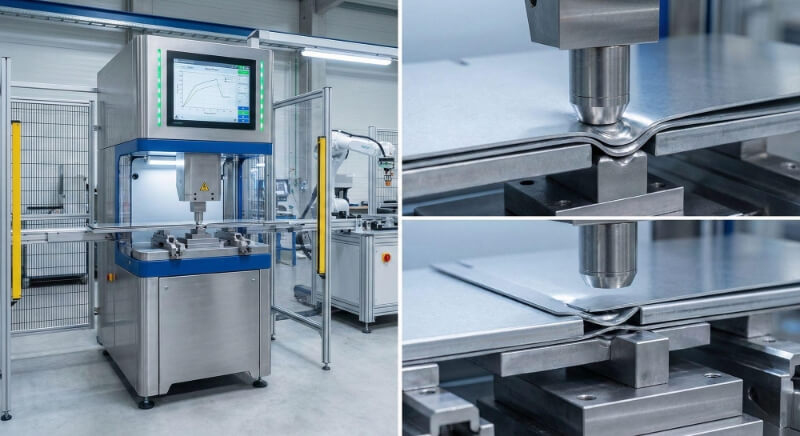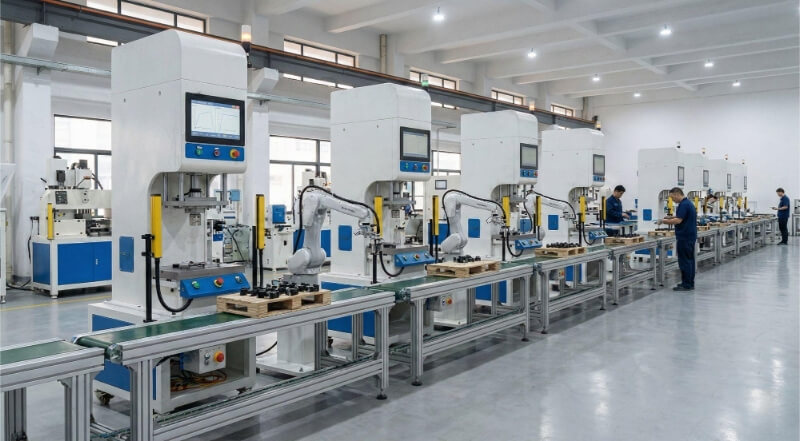The automotive industry has increasingly turned to aluminum due to its strength, lightweight, and versatility. From body panels to engine components, aluminum is used extensively to improve vehicle performance, fuel efficiency, and overall durability. It has become a staple in the production of both traditional and electric vehicles.
As you continue reading, we’ll explore why aluminum is the material of choice for modern car manufacturing. Let’s explore its benefits, applications, and how it contributes to the future of the automotive industry.
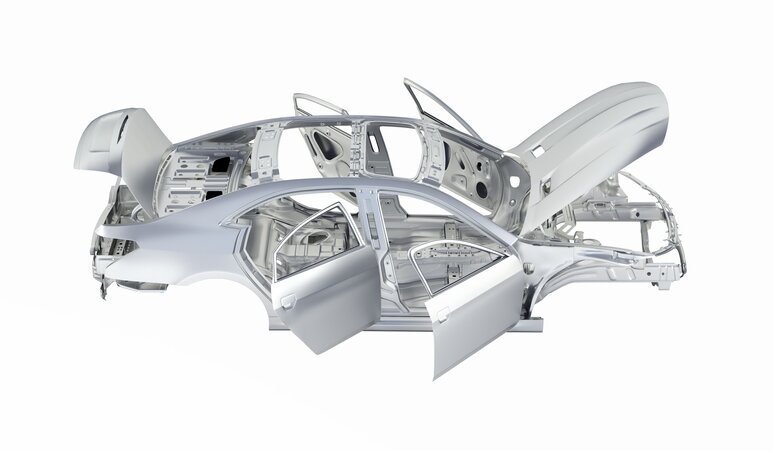
Why Choose Aluminum for Car Parts?
Aluminum is a popular choice for car parts due to its many valuable properties. These qualities make it a great material for various automotive industry applications. Below are some key reasons why aluminum is favored in car manufacturing.
High Strength and Flexibility
Aluminum strikes a balance between strength and flexibility. It provides enough strength for important car parts while still being flexible enough to absorb impacts without breaking.
Malleability
Aluminum is effortless to shape. Its malleability allows it to be formed into complex parts, like body panels and engine components, which require precise shapes.
Conductivity
Aluminum is a good conductor of heat and electricity. This makes it ideal for parts needing heat management, such as engine components. It is also helpful in electrical systems within vehicles.
Resistance to Vibration
Aluminum resists vibration well. This benefits parts that experience constant movement or shocks, such as suspension systems. It helps reduce wear and tear over time.
Relatively Low Density
Aluminum is lighter because it is denser than steel. This reduces the vehicle’s overall weight, improving fuel efficiency and performance.
Corrosion Resistance and Recyclability
Aluminum is resistant to corrosion, even when exposed to the elements. This makes it an excellent choice for parts on the outside of cars, helping prevent rust. Additionally, aluminum is fully recyclable, making it an environmentally friendly option.
Cost Effectiveness
Although aluminum can cost more than steel initially, its long-term benefits make it cost-effective. It improves fuel efficiency, enhances vehicle performance, and reduces maintenance costs. Its durability and resistance to wear also help lower production costs.
Manufacturing Processes for Aluminum Car Parts
Producing aluminum car parts involves several manufacturing processes. Here are the most common techniques used to create aluminum components for cars.
CNC Machining Aluminum Parts
CNC machining is a precise method where the material is removed from a block of aluminum to form complex shapes. It’s perfect for making high-precision parts like engine components, brackets, and transmission. CNC machining provides tight tolerances and smooth finishes.
Aluminum Die Casting
Die casting involves injecting molten aluminum into a mold under high pressure. This process is excellent for producing large quantities of aluminum parts with complex shapes and high accuracy. It’s commonly used for parts like engine blocks, transmission housings, and wheels. Die casting is fast and cost-effective for mass production.
Sheet Metal Aluminum Parts
Sheet metal forming includes cutting, bending, and shaping thin aluminum sheets to create car parts. Standard methods include stamping, bending, and punching. This technique is widely used for making car body panels, doors, and hoods, where large flat pieces are needed. It’s efficient for high-volume production.
Aluminum 3D Printing Parts
3D printing, or additive manufacturing, is becoming more common for making aluminum car parts. This method builds parts layer by layer, allowing for complex designs that would be hard or impossible with traditional methods. It’s beneficial for prototyping and small-batch production of custom components.
Aluminum Forging Parts
Forging shapes aluminum by applying compressive forces, often using hammers or presses. This process improves strength and durability. Due to its high strength-to-weight ratio, aluminum forging is often used for critical automotive parts like suspension components, crankshafts, and connecting rods.
Aluminum Extrusion Parts
In the extrusion process, aluminum is pushed through a die to form parts with consistent cross-sectional shapes. This method is used for car parts like frames, rails, and other structural components. Aluminum extrusion is efficient for creating long, continuous, lightweight, but strong profiles. The process is ideal for high-volume production with minimal waste.
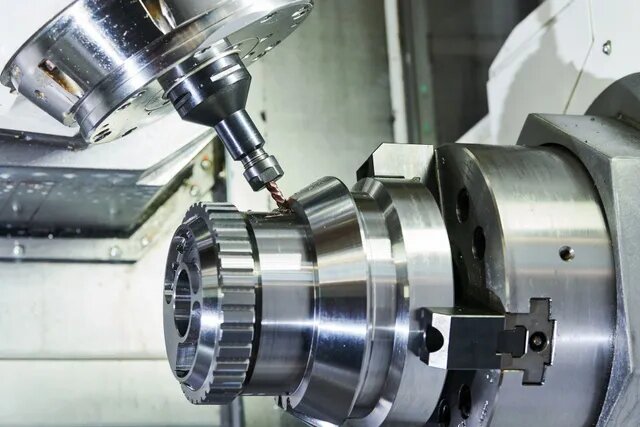
Common Aluminum Alloys Used in Car Parts
Aluminum alloys are carefully selected based on strength, weight, and corrosion resistance. Here are the most widely used types in automotive manufacturing:
1xxx Series (Pure Aluminum – 99%+ Al)
- Example: 1100
- Properties: Highly corrosion-resistant, excellent conductivity, soft, and easy to form.
- Uses: Heat shields, decorative trim, electrical components.
2xxx Series (Aluminum-Copper Alloys)
- Example: 2024
- Properties: High strength, good machinability, lower corrosion resistance.
- Uses: Aircraft-grade parts, high-performance suspension components.
3xxx Series (Aluminum-Manganese Alloys)
- Example: 3003
- Properties: Moderate strength, excellent formability, good corrosion resistance.
- Uses: Fuel tanks, heat exchangers, trim pieces.
5xxx Series (Aluminum-Magnesium Alloys)
- Example: 5052, 5083
- Properties: Strong, weldable, highly corrosion-resistant (especially in saltwater).
- Uses: Body panels, chassis parts, marine-grade components.
6xxx Series (Aluminum-Magnesium-Silicon Alloys)
- Example: 6061, 6063
- Properties: Balanced strength & formability, good weldability, heat-treatable.
- Uses: Frames, structural parts, wheels, EV battery enclosures.
7xxx Series (Aluminum-Zinc Alloys)
- Example: 7075
- Properties: Very high strength (similar to steel), harder to weld.
- Uses: High-stress parts like suspension arms and aerospace components.
Cast Aluminum Alloys (A3xx, A4xx Series)
- Example: A356, A380
- Properties: Good fluidity for casting, heat-treatable, moderate strength.
- Uses: Engine blocks, transmission cases, wheel hubs.
Benefits of Aluminum Car Parts
Aluminum is widely used in the automotive industry because of its many benefits. Here are some key advantages that aluminum car parts offer:
Longevity
Aluminum is highly resistant to corrosion, which helps car parts last longer. Unlike other materials, aluminum doesn’t rust easily, even in harsh weather or when exposed to road salts.
Safety
Aluminum helps improve vehicle safety. Its ability to absorb energy makes it ideal for parts like bumpers and crash zones. During collisions, aluminum parts can absorb impact better, reducing the force felt by the occupants.
Improved Performance
Aluminum parts boost vehicle performance. Due to its low weight and high strength, aluminum helps reduce a car’s overall weight without sacrificing durability. This results in better handling, faster acceleration, and more responsive braking.
Fuel Efficiency
Lighter vehicles need less energy, and aluminum significantly reduces weight. By replacing heavier materials with aluminum, car manufacturers can improve fuel efficiency.
Reduced Emissions
Aluminum helps reduce a vehicle’s weight, which improves fuel efficiency. As a result, cars use less fuel and produce fewer carbon emissions.
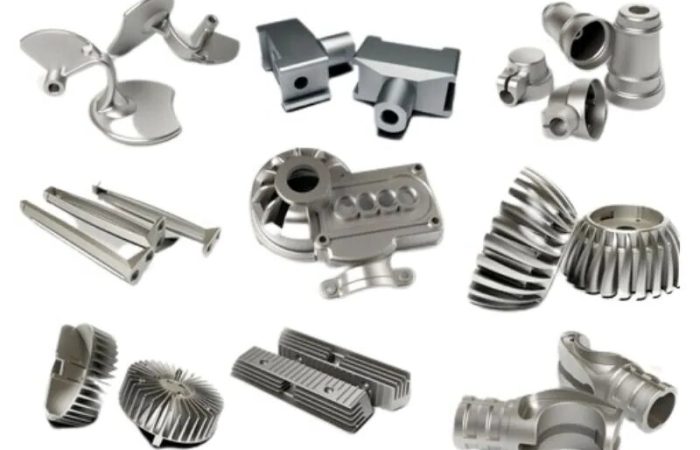
Aluminum Car Parts Applications
Aluminum is used in many car parts because of its lightweight, durable, and corrosion-resistant properties. Here are some of the main applications of aluminum in automotive manufacturing.
Engine Components
Aluminum is often used in engine parts because it can handle high temperatures and is light in weight. Standard engine components like cylinder heads, engine blocks, and pistons are made from aluminum to reduce weight and improve performance while maintaining strength and durability.
Chassis and Body Parts
Aluminum is increasingly used for car chassis and body parts. Its strength-to-weight ratio makes it perfect for reducing vehicle weight without losing structural strength. Aluminum is used in car frames, crash structures, and outer body panels, helping with safety and performance.
Wheels and Rims
Aluminum wheels and rims are popular because they are lightweight and improve fuel efficiency and performance. Aluminum rims are also stronger than steel ones, enhancing vehicle handling and reducing unsprung weight, which results in better suspension performance.
Suspension Components
Suspension parts like control arms, struts, and subframes are often made from aluminum. The material’s strength and resistance to corrosion help these parts withstand the stresses and vibrations of the road while keeping the car’s weight lighter, leading to better handling and stability.
Heat Exchangers and Radiators
Aluminum is an excellent material for heat exchangers and radiators because of its heat conductivity. Aluminum radiators are widely used in cars as they efficiently dissipate heat and help maintain engine temperature. They are also lighter than traditional copper radiators.
Doors, Hoods, and Roof Panels
Aluminum is often used for doors, hoods, and roof panels. It is easy to shape and mold, and its lightweight nature helps reduce the car’s overall weight. This contributes to better fuel efficiency and improved handling.
Interior Components
The car uses aluminum in parts like trim, dashboards, and seat frames. Its strength, flexibility, and aesthetic appeal make it a good choice for interior applications. Aluminum adds both functional and visual value to modern vehicle designs.
Aluminum in Electric and Hybrid Vehicles
Aluminum is key in electric and hybrid vehicles (EVs and HEVs). It helps improve performance, range, and energy efficiency. Below are the main ways aluminum contributes to these vehicles.
The Role of Aluminum in EV and Hybrid Car Design
In EVs and hybrid cars, aluminum is widely used to reduce the vehicle’s overall weight. Lighter cars are more energy-efficient because they need less power to operate. This helps maximize battery life and improves overall vehicle performance.
Aluminum is used in the body, chassis, and structural parts to reduce weight without sacrificing strength, safety, or durability. Its ability to be recycled also supports electric vehicles’ eco-friendly goals.
How Aluminum Contributes to Battery Efficiency?
Aluminum is essential for improving the efficiency of EV and hybrid vehicle batteries. Because of its light weight and ability to conduct heat, it is often used in battery housing and structural supports.
Aluminum helps dissipate heat produced by the battery during charging and discharging, keeping it at the right temperature. This allows the battery to perform better, last longer, and use energy more efficiently.
Conclusion
Aluminum is changing the automotive industry by providing a lightweight, durable, and cost-effective solution for car manufacturing. Its benefits, such as improved fuel efficiency, performance, and reduced environmental impact, make it an ideal choice for modern vehicles.
At Shengen, we specialize in precision aluminum fabrication for automotive applications. Whether you need CNC machining, die casting, sheet metal forming, or custom extrusions, our expertise ensures top-tier performance and reliability. Contact us today for a free quote.
Hey, I'm Kevin Lee

For the past 10 years, I’ve been immersed in various forms of sheet metal fabrication, sharing cool insights here from my experiences across diverse workshops.
Get in touch

Kevin Lee
I have over ten years of professional experience in sheet metal fabrication, specializing in laser cutting, bending, welding, and surface treatment techniques. As the Technical Director at Shengen, I am committed to solving complex manufacturing challenges and driving innovation and quality in each project.


